
The Berlin Wall was a guarded concrete barrier that encircled West Berlin from 1961 to 1989, separating it from East Berlin and the German Democratic Republic. Construction of the Berlin Wall was commenced by the government of the GDR on 13 August 1961. It included guard towers placed along large concrete walls, accompanied by a wide area that contained anti-vehicle trenches, beds of nails and other defenses. The primary intention for the Wall's construction was to prevent East German citizens from fleeing to the West.

Robert Siodmak was a German film director. His career spanned some 40 years, working extensively in the United States and France, as well as in his native country. Though he worked in many genres, he was best known as a skilled craftsman of thrillers and film noir, and was nominated for an Academy Award for Best Director for The Killers (1946).

Heinrich Wilhelm "Heinz" Rühmann was a German film actor who appeared in over 100 films between 1926 and 1993. He is one of the most famous and popular German actors of the 20th century, and is considered a German film legend. Rühmann is best known for playing the part of a comic ordinary citizen in film comedies such as Three from the Filling Station and The Punch Bowl. During his later years, he was also a respected character actor in films such as The Captain from Köpenick and It Happened in Broad Daylight. His only English-speaking movie was the 1965 Ship of Fools.
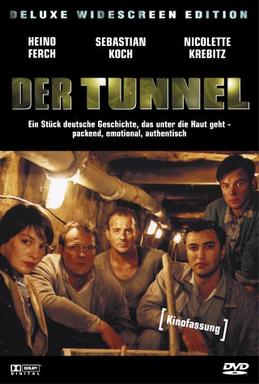
The Tunnel is a made-for-television German film released in 2001 and loosely based on true events in Berlin following the closing of the East German border in August 1961 and the subsequent construction of the Berlin Wall. Roland Suso Richter directed the film. The theatrical release is 20 minutes shorter than the original television version. The subtitled English version was released in 2005.

Bernauer Straße is a street of Berlin situated between the localities of Gesundbrunnen and Mitte, today both belonging to the Mitte borough. It runs from the Mauerpark at the corner of Prenzlauer Berg to the Nordbahnhof. The street's name refers to the town of Bernau bei Berlin, situated in Brandenburg.

Athletes from East Germany and West Germany competed together as the United Team of Germany for the last time at the 1964 Summer Olympics in Tokyo, Japan. 337 competitors, 275 men and 62 women, took part in 159 events in 19 sports.

Athletes from East Germany and West Germany competed together as the United Team of Germany at the 1960 Summer Olympics in Rome, Italy. 293 competitors, 238 men and 55 women, took part in 148 events in 17 sports.
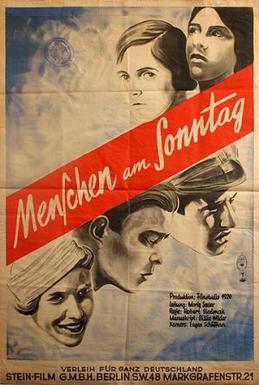
People on Sunday is a 1930 German silent drama film directed by Robert Siodmak and Edgar G. Ulmer from a screenplay by Robert and Curt Siodmak. Curt was the younger brother of Robert Siodmak. The film follows a group of residents of Berlin on a summer's day during the interwar period. Hailed as a work of genius, it is a pivotal film in the development of German cinema and Hollywood. The film features the talents of Eugen Schüfftan (cinematography), Billy Wilder (story) and Fred Zinnemann.
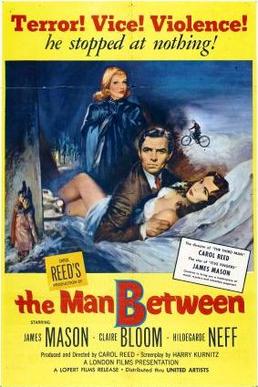
The Man Between is a 1953 British thriller film directed by Carol Reed and starring James Mason, Claire Bloom and Hildegard Knef. The screenplay concerns a British woman on a visit to post-war Berlin, who is caught up in an espionage ring smuggling secrets into and out of the Eastern Bloc.
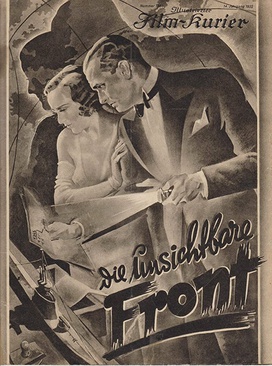
The Invisible Front is a 1932 German spy thriller film directed by Richard Eichberg and starring Trude von Molo, Karl Ludwig Diehl, Veit Harlan and Paul Hörbiger. The story was written by Robert A. Stemmle, Curt Siodmak and Max W. Kimmich, who also presented the idea of this film to his colleagues. It was made at the Johannisthal Studios in Berlin and on location in Hamburg. The film's sets were designed by the art directors Artur Günther and Willi Herrmann.
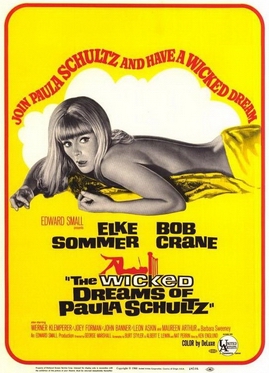
The Wicked Dreams of Paula Schultz is a 1968 DeLuxe Color American comedy film directed by George Marshall and starring Elke Sommer, Bob Crane, Werner Klemperer and Leon Askin. The screenplay concerns an East German athlete who defects to the West by pole-vaulting over the Berlin Wall.

Tango Notturno is a 1937 German drama film directed by Fritz Kirchhoff and starring Pola Negri, Albrecht Schoenhals, and Lina Carstens.
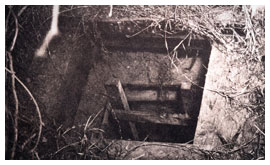
The Great Papago Escape was the largest Axis prisoner-of-war escape to occur from an American facility during World War II. On the night of December 23, 1944, twenty-five Germans tunneled out of Camp Papago Park, near Phoenix, Arizona, and fled into the surrounding desert.

Egon Schultz was a German sergeant of the East German Border Troops who became the fifty-second known person to die at the Berlin Wall. While responding to the discovery of "Tunnel 57," Schultz was killed during a shootout with the tunnelers. Schultz subsequently became a national hero in East Germany, with hundreds of memorials and schools named in his honor. His death caused a public sensation in both East Germany and West Germany. Following the reunification of Germany and the report that Schultz was actually killed as a result of friendly fire, many of the memorials to Schultz were removed, although a new memorial plaque was erected at his death site at Strelitzer Strasse 55, Berlin, in 2004.
Events in the year 1973 in Germany.
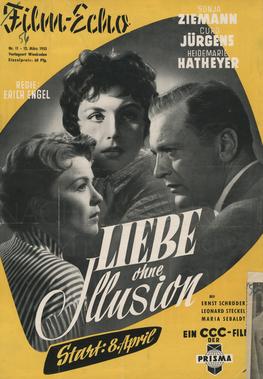
Love Without Illusions is a 1955 West German drama film directed by Erich Engel and starring Sonja Ziemann, Curd Jürgens and Heidemarie Hatheyer.














